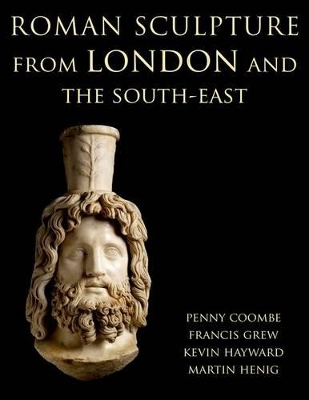Corpus Signorum Imperii Romani
1 total work
Roman Sculpture from London and the South-East
by Penny Coombe, Martin Henig, Francis Grew, and Kevin Hayward
Published 16 April 2015
This, the tenth fascicule in the British section of the international series Corpus Signorum Imperii Romani, concerns Roman sculpture from south-east England. Over 200 individual items are catalogued, from the counties of Kent, Surrey and Hertfordshire, as well as from Greater London.
In contrast to the rest of Britain, this region has yielded a substantial collection of marble and bronze statuary. The sculptures from the Temple of Mithras in London are notable highlights, as are the busts probably of the emperor Pertinax and his father from the villa at Lullingstone. The famous head of Hadrian from the Thames is one of only three bronze statues of that emperor from the entire Roman world. Scarcely less impressive is the limestone sculpture, which includes important funerary monuments and sarcophagi, alongside depictions of Classical and Romano-British deities. In the last of these categories, a Matronae relief with four rather than the usual three matrons, and several representations of a Hunter God are particularly intriguing.
A substantial part of the book concerns architectural sculpture, in particular fragments of three major monuments: the quadrifrons arch at Richborough, and a small arch and screen from London. The figural and floral motifs on the London monuments are analysed in detail, revealing close links with contemporary sculpture in the Rhineland.
For the first time in the British CSIR series, this fascicule contains a comprehensive study of the types and sources of the stone. Nearly every item was examined visually by an archaeological petrologist, Dr Kevin Haywood, and approaching half in thin-section. It emerges that in the early Roman period sculptors in Kent used stone quarried in northern France rather than Britain, so demonstrating the importance of cross-Channel connections in the formative years of the province of Britannia.
In contrast to the rest of Britain, this region has yielded a substantial collection of marble and bronze statuary. The sculptures from the Temple of Mithras in London are notable highlights, as are the busts probably of the emperor Pertinax and his father from the villa at Lullingstone. The famous head of Hadrian from the Thames is one of only three bronze statues of that emperor from the entire Roman world. Scarcely less impressive is the limestone sculpture, which includes important funerary monuments and sarcophagi, alongside depictions of Classical and Romano-British deities. In the last of these categories, a Matronae relief with four rather than the usual three matrons, and several representations of a Hunter God are particularly intriguing.
A substantial part of the book concerns architectural sculpture, in particular fragments of three major monuments: the quadrifrons arch at Richborough, and a small arch and screen from London. The figural and floral motifs on the London monuments are analysed in detail, revealing close links with contemporary sculpture in the Rhineland.
For the first time in the British CSIR series, this fascicule contains a comprehensive study of the types and sources of the stone. Nearly every item was examined visually by an archaeological petrologist, Dr Kevin Haywood, and approaching half in thin-section. It emerges that in the early Roman period sculptors in Kent used stone quarried in northern France rather than Britain, so demonstrating the importance of cross-Channel connections in the formative years of the province of Britannia.
